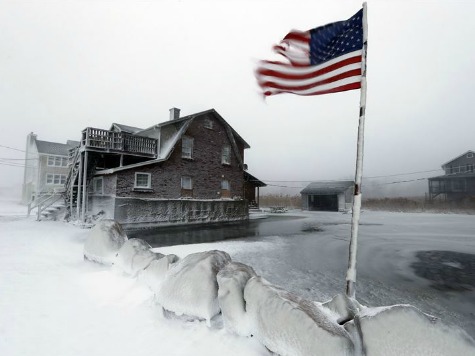The January freeze and crippling storms gripping the eastern United States and upper Midwest are having significant impacts on normal life and commerce. Gauging its ultimate impact on the national economy–still affected by a nagging hangover from the Great Recession–is far more complex than merely adding up lost retail and insurance payouts for damage.
The country braces for cold and storms each winter, but this year’s conditions are more severe than cities and counties customarily prepare to address. Many commercial structures and homes were not built for these unanticipated conditions. The storms these past few weeks in New York would have been manageable for Minneapolis but the Big Apple is not set up for a Minnesota winter. Nor is Minnesota for Arctic conditions.
For a few days, many restaurants closed and workers did not go to their offices. Overall retail sales were adversely affected, as many shoppers could not so easily get to the malls. Pipe bursts and similar mechanical breakdowns damaged homes and commercial structures.
Many businesses closed and lost worker productivity, even though many employees will still be paid.
Venturing out in my four-wheel drive on emergency snow routes closed to parking in Washington, my wife and I found some shops open and catering to walk-in patrons. The local hardware store was doing a bustling business in shovels and ice-melt. Contractors with trucks and plows got a windfall, and plumbers and heating contractors were quite busy with emergency patches.
Overall, though, the freezing temperatures and ice imposed big losses! Initially, lost economic activity and damages will range between $20 and $40 billion.
Still, it is important to recognize, unlike the 1950s when the nation’s workers were much more concentrated in factories, most of the lost productivity and commerce in a modern service economy is more easily made up once warmer weather returns.
Granted, although some trips and business lunches postponed will be made up, the airlines, restaurants and broader hospitality industry have taken a permanent hit from colder than normal weather. However, accountants will still manage to get all the tax returns done by April 15–and the IRS and state tax agencies will manage to process those.
Overall, workers who took a few days off will put in extra time later this month and next to catch up. Of those paid while at home these past few weeks, most will not receive extra pay–for those businesses and governments, it will all net out.
Folks that did not buy cars in January and February will purchase those in March and April. With memories of ice-storms, they may be more inclined to purchase heavier SUVs, four-wheel drives and trucks that cost more, actually increasing the value of what Detroit puts on the road.
Buildings will be repaired and improved, and that adds, not subtracts from GDP. Some property owners will undertake improvements to better fortify against cold weather and ice they had previously not considered.
First quarter GDP will likely be about 0.2 or 0.3 percent lower, but most of that will be made up in the second quarter.
Big storms and freezing temperatures make fascinating news–witness the success of the Weather Chanel and cable news stations when major storms rumble through–but American businesses and consumers are enormously resilient.
Like a tennis star suffering a sprained ankle, the U.S. economy will soon be back on its feet with as fierce a backhand as ever.
Peter Morici is an economist and professor at the Smith School of Business, University of Maryland School, and a widely published columnist.

COMMENTS
Please let us know if you're having issues with commenting.